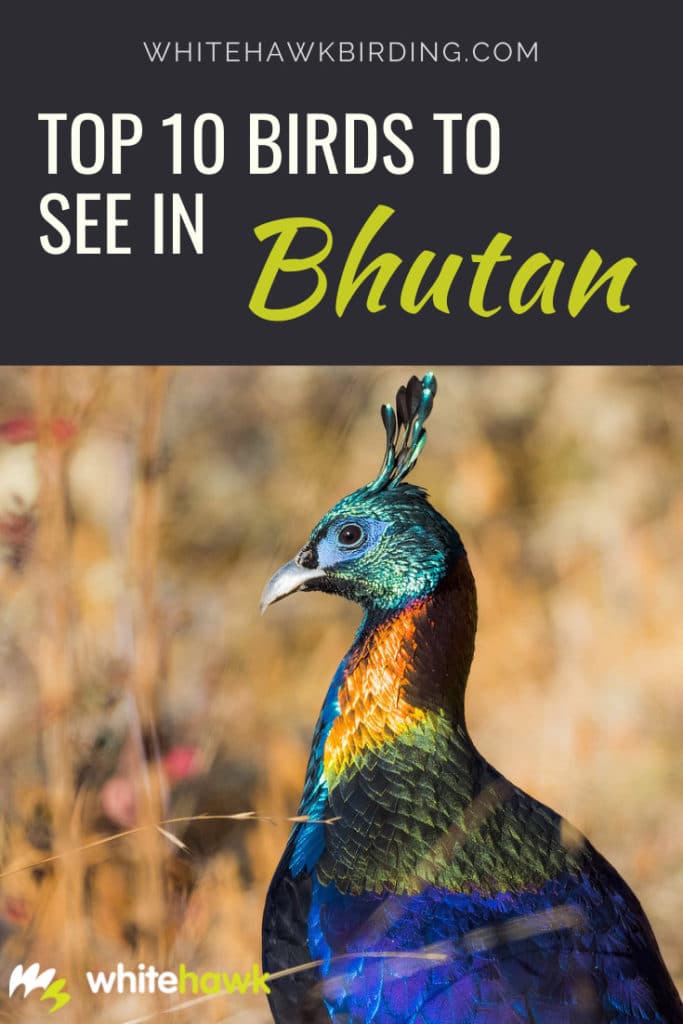While the land-locked kingdom of Bhutan prides itself on its Gross National Happiness (GNH) one of the most appealing draws to “the land of the thunder dragon” is its birds. Perhaps it’s the enjoyment of birds that contributes to their GNH! Nearly 700 birds, many spectacular, unique and rare, can be found in Bhutan. As we prepare for our first tour to this Asian birder’s paradise, we want to share our list of top 10 birds to see in Bhutan.
Fun fact! Bhutan’s national bird is the Common Raven, but as most are familiar with ravens, we are going to focus on 10 birds to see in Bhutan that really call our attention.
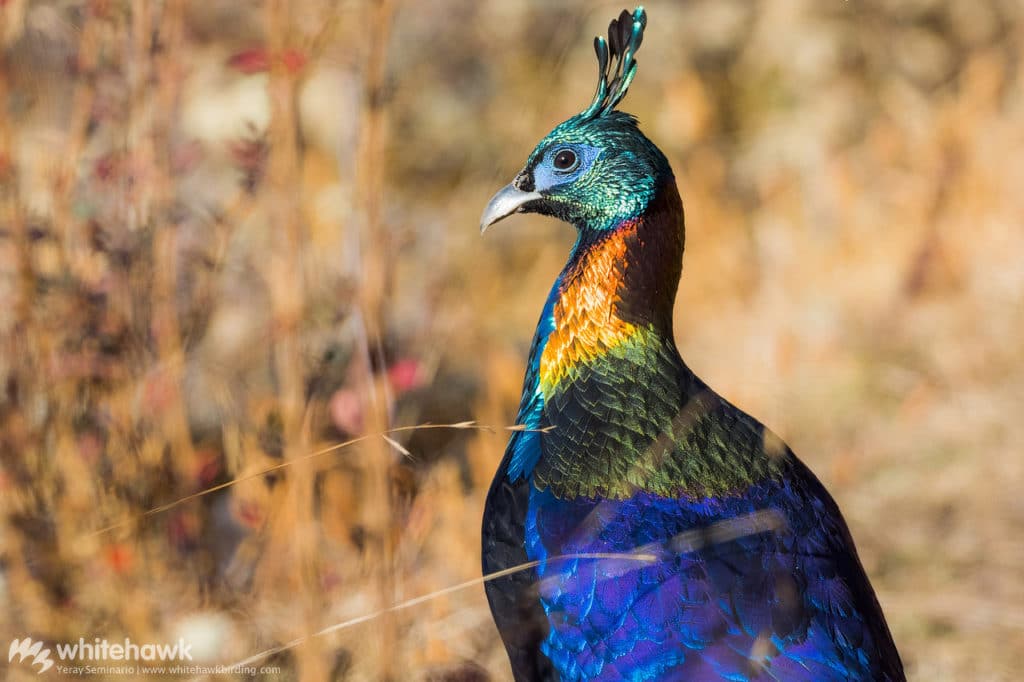
1. Himalayan Monal
Bhutan is home to some of the world’s most spectacular pheasants, and the Himalayan Monal is one that stands out on top. The male, decked out in an iridescent rainbow of colors on top contrasting with stark black underparts, is really quite a sight, easily standing out among the subtle colors of the hill forest of the Himalayas. Females are soft streaky brown overall with a noticeable white throat and a light blue eye patch. Both males and females have a short, upturned crest. Like many pheasants, while they can fly, they are most often seen on the ground and prefer to walk from place to place through the high-altitude forests, scrublands, and alpine meadows at elevations between 2100-4500 m. The Himalayan Monal is the national bird of Bhutan’s neighbor country, Nepal, yet stands out like no other in Bhutan.
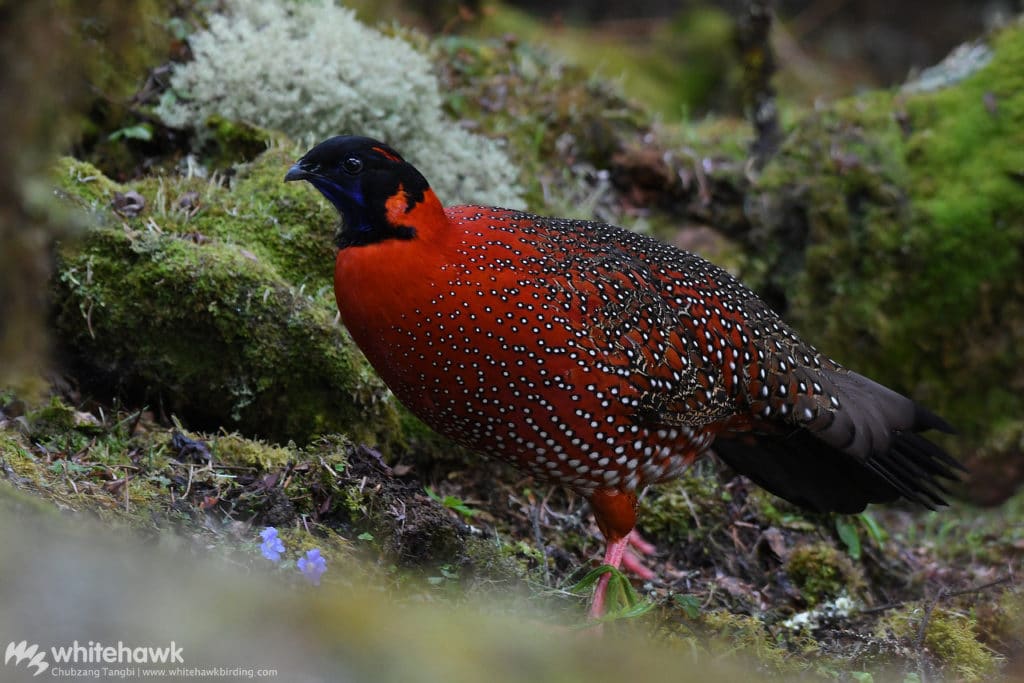
2. Satyr Tragopan
Tragopans are extravagant pheasants in several ways, many with showy colors, dazzling wattles, horns, and elaborate displays. The male Satyr Tragopan is a brilliant crimson red and black with white speckling. During the breeding season, males grow horns on the back of their heads and a gular wattle. A male will hide behind a log and wait for a female to walk by, then pop out, inflate his electric blue horns and flat, colorful wattle, and put on a performance in hopes to impress! Like other pheasants, females have subdued plumage, a chocolate brown color overall. The dense rhododendron forests of Bhutan are one of the best places to see this large pheasant.
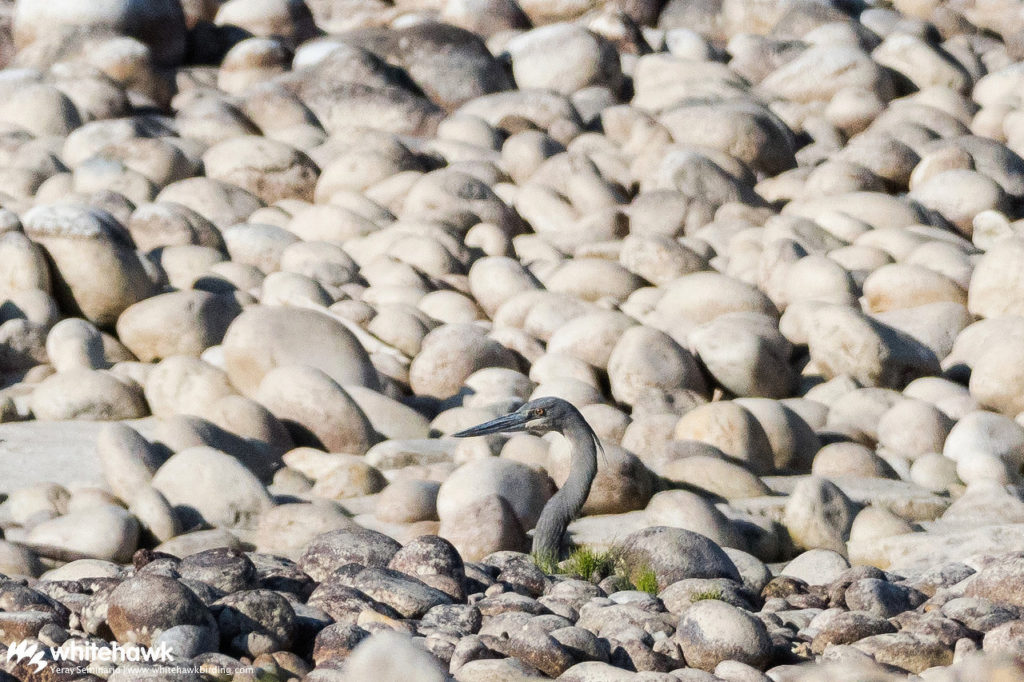
3. White-bellied Heron
The White-bellied Heron is the rarest heron in the world. It inhabits the rushing streams of the mountainous regions of Bhutan, northeastern India, and Myanmar, blending in perfectly with the large slate gray rocks. It is one of the largest herons in the world, standing 1.3 meters tall. The White-bellied Heron is critically endangered due to high sensitivity to changes in its environment, and habitat degradation and disturbances have reduced the global population of the species to under 300 individuals. Whitehawk is contributing to the conservation of the White-bellied Heron in Bhutan with the children’s book, “Somewhere, A River,” written by Marta Curti.
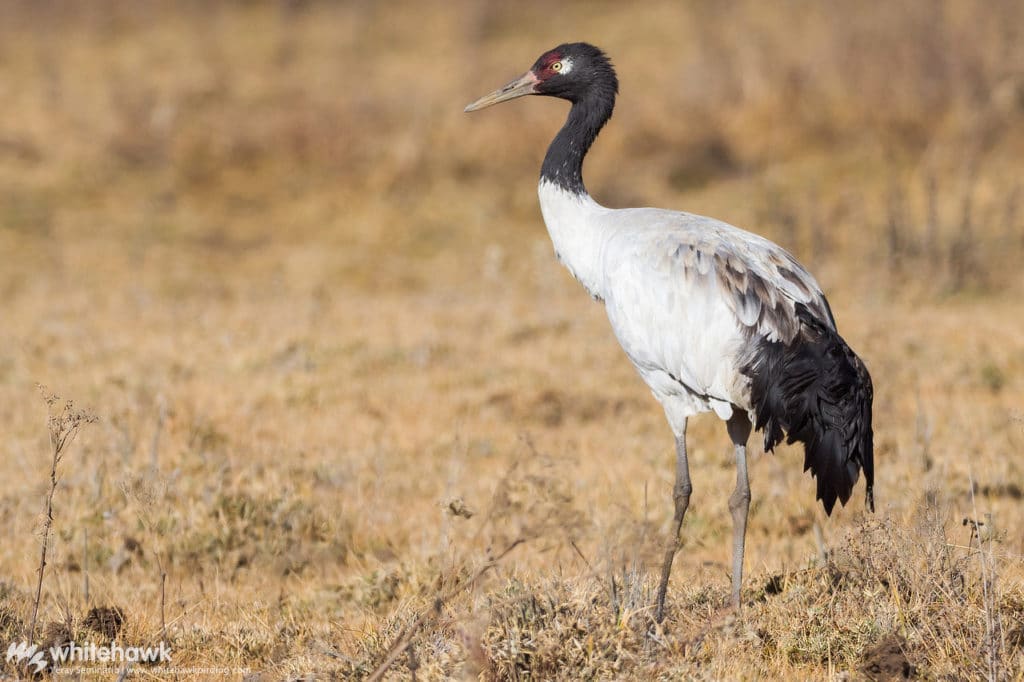
4. Black-necked Crane
Through the months of November to March, Black-necked Cranes descend from their breeding grounds on the high Tibetan plateaus to the shorelines of lakes and flooded fields. In Bhutan, these large, elegant birds are revered by Buddhist traditions. They are protected throughout the country. Bhutanese people believe that they are blessed when the cranes are seen circling around their valleys. Bhutan also holds an annual festival in November in celebration of the arrival of the Black-necked Cranes.
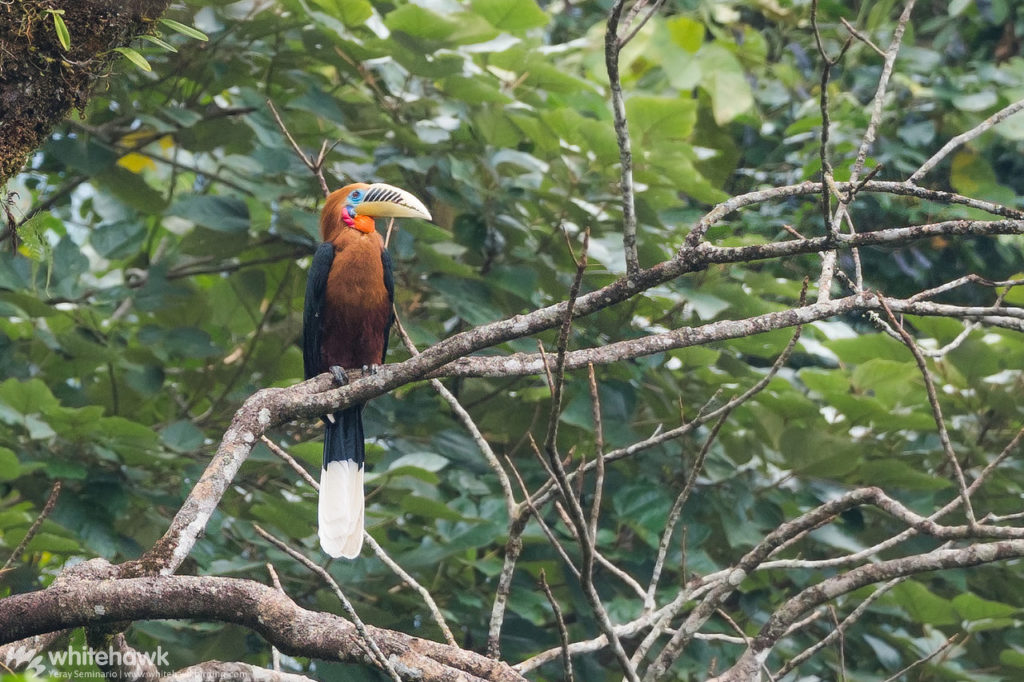
5. Rufous-necked Hornbill
This large hornbill, over 1 meter in length, can be found in the hill forests of Bhutan and scattered eastward through appropriate habitat in mainland southeast Asia. Males are striking, with a bright rufous head and neck, while females are black all over. They have a distinctive decurved bill with black grooves near the base. Bhutan is a stronghold for the Rufous-necked Hornbill, providing good habitat and has laws in place for its protection. Currently listed as vulnerable, it is threatened with habitat loss and hunting. There are an estimated 10,000 adults remaining in the wild.
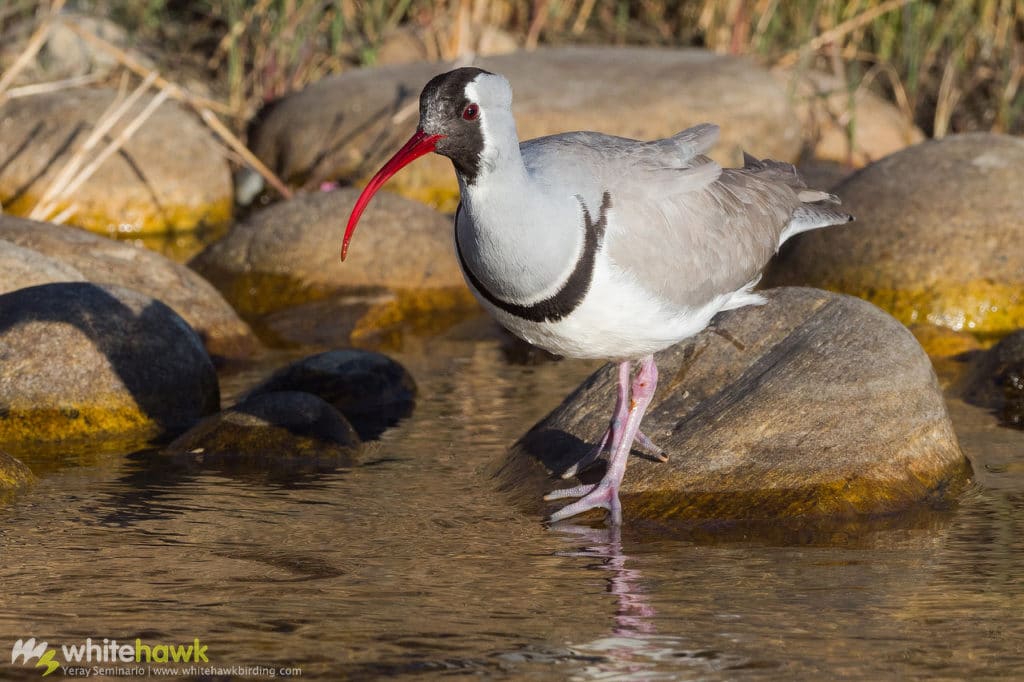
6. Ibisbill
Among the rushing waters and rocky rivers of the Himalayan plateaus, you can encounter the unique Ibisbill. Named for its distinctive crimson-colored down-curved bill, this spectacular shorebird has bold markings, but despite all this, it can camouflage perfectly among the stony riverbeds. It is so unique that it has been placed in its own genus and family, Ibidorhynchidae. It is a special bird to see in Bhutan. Ibisbills are generally solitary but can be seen in small groups, probing their beaks among the rocks and water. Curiously, they are good swimmers, and prefer to swim rather than fly across streams and rivers!
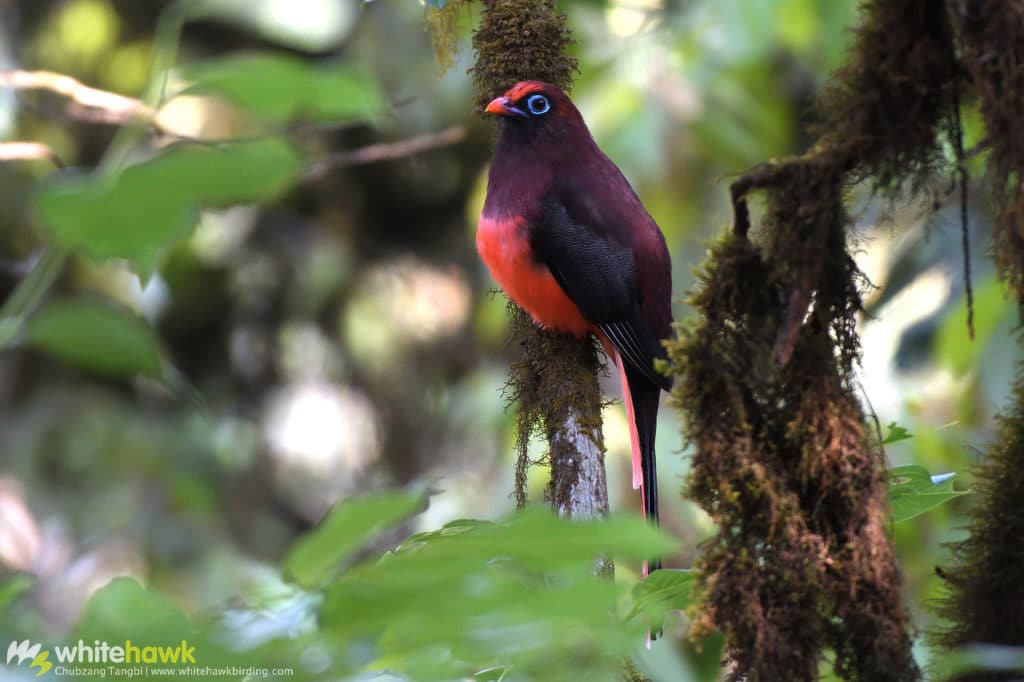
7. Ward’s Trogon
Ward’s Trogon is a beautiful Old-World trogon with a restricted range. We can find it in the hill forests of Bhutan, where its range extends over much of the country. Like other trogons, it sits quietly, perched upright in the midstory of the forest. It sallies out on occasion to grab insects and fruits. They have a plump body with a small head. Males have beautiful wine-purple plumage with a bright red belly and cap, and females are soft gray overall with a yellow belly, forehead, and outer tail feathers. Both sexes have bright blue eyerings. It attracts attention by its loud, repeated series of calls.
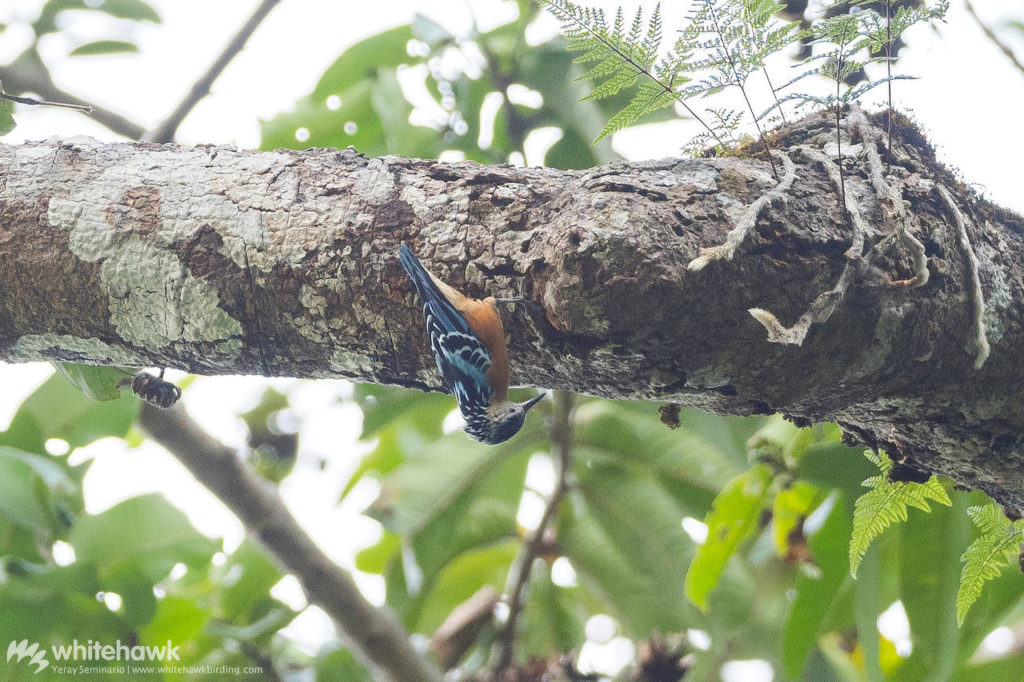
8. Beautiful Nuthatch
A large nuthatch with a restricted range in central Asia. Bhutan is a stronghold for this uncommon species, where it lives in primary forests protected by the country. Its plumage is a mix of black, blue, and white above and bright orange below, making it a truly spectacular bird. We search for the Beautiful Nuthatch in its preferred habitat along the Shemgang Road during our Bhutan: Birding in the Himalayas tour, where we hope to see it scaling tree trunks and branches in a typical nuthatch manner.
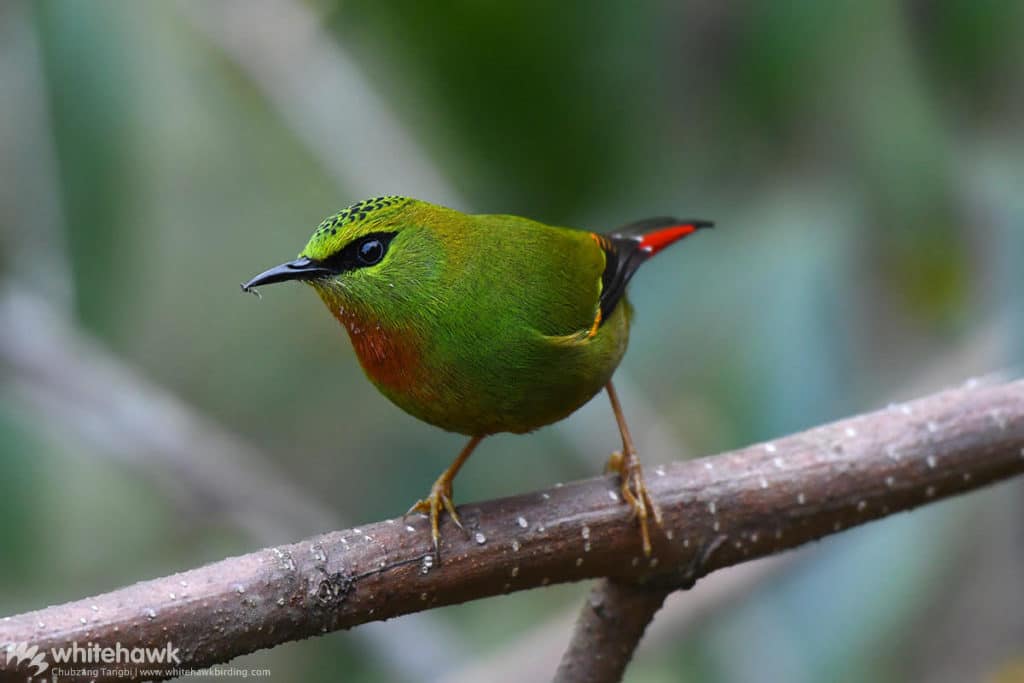
9. Fire-tailed Myzornis
The Fire-tailed Myzornis is definitely one of the most-wanted birds to see in Bhutan. It is a small yet flashy bright green warbler with fiery red in the tail. It is closely related to the parrotbills and has recently been placed in the family. The Fire-tailed Myzornis is a denizen of the middle to high elevation forests of the Himalayas. We can often see this bird feeding among mixed feeding flocks in search of insects and fruits. It prefers to forage in dense bamboo thickets and rhododendron forests.
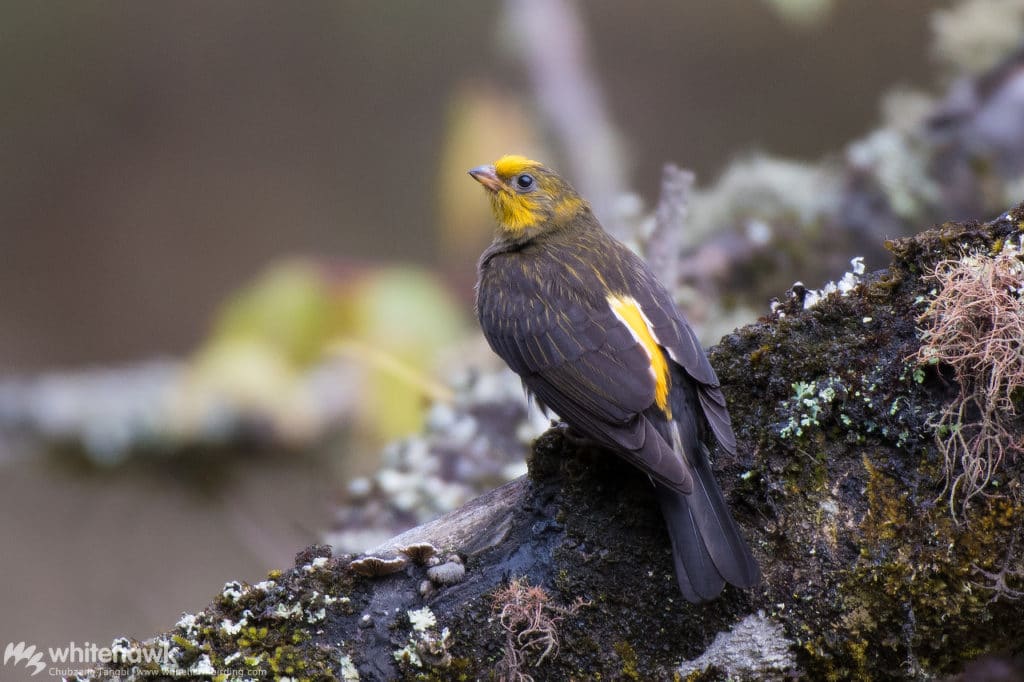
10. Yellow-rumped Honeyguide
Honeyguides get their name from their close association to bees and specifically for guiding humans to bees. The Yellow-rumped Honeyguide does associate closely with the large nests of Himalayan Asian Honeybees (Apis laboriosa), in which it feeds on the beeswax. To help them grab onto bee nests, they have zygodactyl feet, having two toes pointing forward and two toes pointing backward. Yellow-rumped Honeyguides are polygynous, in which males mate with multiple females. They are also brood parasites. Females lay eggs in other birds’ nests and when the chicks hatch, they kill the nestlings of the host species. These unique behaviors all combine to make one very unique bird, making it one of the top birds to see in Bhutan.
Discover the magic of birding in Bhutan with us! Join us on an upcoming tour, where it is not only possible to see the top 10 birds listed here, but hundreds of others as well as fascinating mammals and impressive monasteries. Visit Bhutan and become part of their story of happiness.

